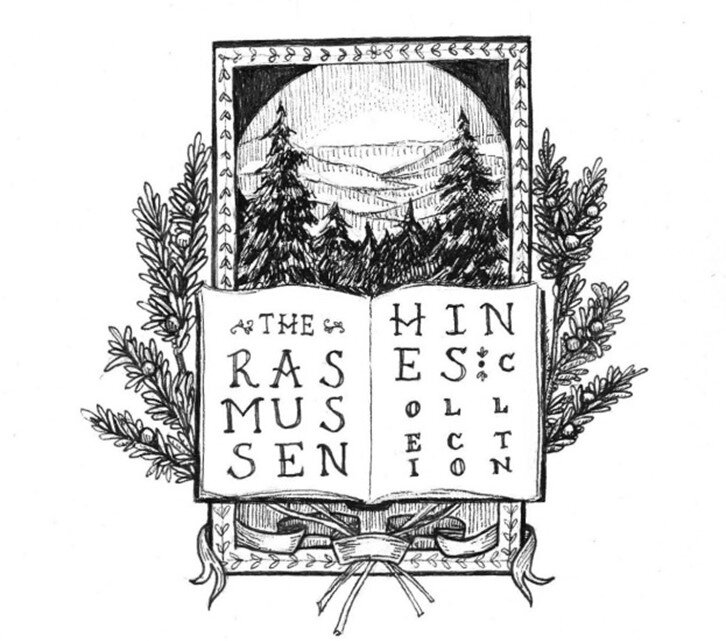[MORE, Sir Thomas]. A single leaf from Sir Thomas More’s A Dialogue Concerning Heresies; paper, 174 x 246(?) mm. Written in secretary hand in a single column, unruled, on recto (35 lines) and verso (37 lines).
The written text, which appears in Book 3, Chapter 16, comprises (recto) 331/6-332/10; (verso) 332/10-333/11 of the Yale edition. (pg. 241-242 of the 1557 Workes of Sir Thomas More Knyght…, Q6r-v of the 1529 A dyaloge of syr T. More ... wherin be treatyd dyuers maters, as of the veneration & worshyp of ymagys…) The running title on both sides reads “The Thyrde Booke.” The recto includes the catchword “me”, while the verso side catchword is “call.” The recto side also includes a marginal note from the 1557 edition, although a marginal note from the second column of pg. 241 of the same edition is excluded.
In 2019, Edwards and Fraas announced that eleven leaves from a previously unknown manuscript, written by an unknown scribe, of Thomas More’s English writings had been sold at various auction houses in England and North America. Edwards and Fraas detail a number of puzzling points about these sales, including the anonymity of the vendor, the failure to identify More as the author of the text in several of the sale listings, and the nature of the source manuscript. Three of the eleven sales were consecutive leaves from Dialogue Concerning Heresies, sold individually at three separate auctions (2015-2018).[1] The recto contents of the first (Chiswick Auctions, 2015) are unknown, but the verso comprised Yale 327/35-328/36. The second (Addison & Sarova, 2017, now at Kislak Special Collections, University of Pennsylvania) comprised Yale 328/36-331/6. This leaf, the third in the series, takes up at 331/6 and runs to 333/11.
The manuscript includes several corrections and inserts reflecting scribal error. The most obvious appears on line 2 of the verso side. The correct word, as printed in the 1529 edition is “ordeyned”; however, the scribe appears to have struggled with the word, suggesting that he might have been copying from the 1557 Workes, in which “ordeyned” is split between lines and difficult to read. Either further thought or, perhaps, consultation with the 1529 edition, led the scribe to cross out his original attempt and write “ordeyned” more clearly above. There are multiple instances at which the scribe has used an abbreviation when the full word was used in the printed text, or vice versa (see esp. line 8v, “damned”, “dāned” in 1557, “dampned” in 1529). There are also several points at which the scribe’s spelling matches neither printed edition exactly but inclines toward the 1529 version:
MSr line 24 nothinge] nothynge 1529; nothing 1557
MSr line 30 muche] moche 1529; much 1557
MSr line 31 finde] fynde 1529; finde 1557
As to content, in this section of Book 3, Chapter 16, the Messenger questions why the clergy oppose letting laymen have Bibles in English translation. More responds that only “wicked” translations, such as Wyclif’s and Tyndale’s, are prohibited; older translations are still permitted. He blames the caution of printers, who fear being punished for printing translations that are ultimately condemned, and bishops, who fear it would do more harm than good. More and the Messenger agree that having an English translation of the Bible would be to the general good. The Messenger complains that the clergy think the people “infantes” who can only eat either “milk and pappe” or meat that has first been “chammed” (chewed) by the nurse, meaning that scripture, the “foode of the soule” must be pre-digested by the clergy before it reaches the people, rather than accessed directly through a vernacular translation.
Dr. Molly G. Yarn
_________________________
Edwards, A.S.G., and Mitch Fraas, ‘A New English Manuscript of More’s English Works’, The Library, 20.1, 89–93
[1] Of the eight other single leaves from this manuscript that have been sold individually, six were from the Confutation of Tyndale’s Answer; they consist of three pairs of consecutive leaves, taken from different sections. The other two leaves, from Answer to a Poisoned Book, are not consecutive.

